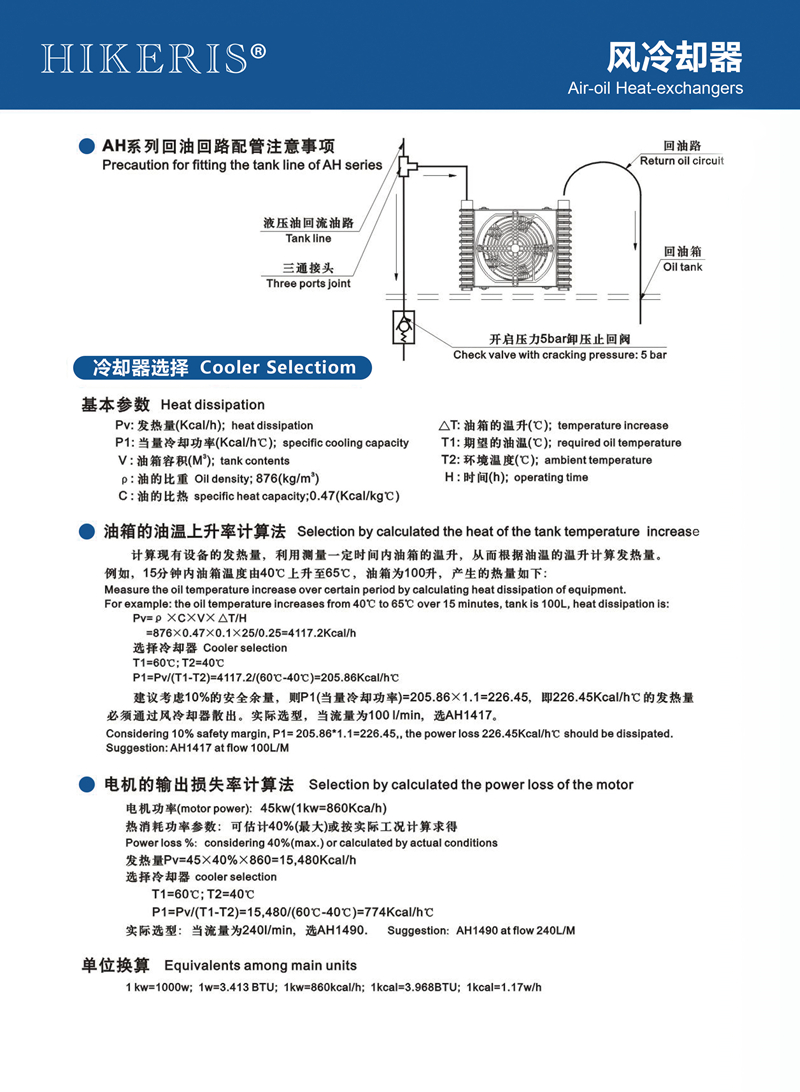coolers are often essential for designing temperature-optimized hydraulic systems that keep oil temperatures within a limited range. Such circuits are basic prerequisites for cost-efficient operation, as they provide a number of performance, economic, and environmental benefits. These include:
Maintaining the correct temperature keeps oil at its recommended viscosity, ensuring mechanical components are properly lubricated and hydraulic devices run at peak efficiency. Letting oil temperature rise beyond recommended limits can reduce the life of a system due to poor lubrication, higher internal leakage, a higher risk of cavitation, and damaged components.
Keeping temperatures down also helps ensure the oil and other components last longer. Excess heat can degrade hydraulic oil, form harmful varnish on component surfaces, and deteriorate rubber and elastomeric seals.
Operating within recommended temperature ranges increases a hydraulic system’s availability and efficiency, improving equipment productivity.
Finally, with more machine uptime and fewer shutdowns, it reduces service and repair costs.
Considering the benefits coolers offer, it’s apparent that accurately sizing them is a paramount concern for design engineers. Undersizing obviously allows higher-than-recommended oil temperatures. But oversizing hurts system efficiency as well, by reducing temperatures below the recommended range and increasing costs with a larger-than-necessary purchase. Here are some tips on selecting the right type and size cooler for a specific application.
Cooler options
Several different types of coolers are suitable for hydraulic systems, with air and water cooled being the most common.
Air-cooled systems dissipate heat with flowing air. This type of cooler operates by forcing cold air over hot fluid inside a heat exchanger’s coil or core. Low running cost and simple maintenance are attractive benefits of air-cooled systems. They also eliminate water-contamination problems and minimize corrosion. Additionally, heat generated from air-cooled systems can be used for other purposes.
On the downside, the upfront expense of an air-cooled system exceeds that of a water-cooled unit. Air-based versions are also larger and generate more noise, so they can degrade the work environment. What’s more, these coolers require ventilation and clean air, and variations in ambient temperature can greatly affect cooling capacity — making steady-state operation more difficult to maintain.
Water-cooled systems use cold water to remove heat, with hot and cold fluids separated by a barrier. Compared to air-cooled systems of equivalent capacity, water-cooled systems have lower up-front costs. They’re also quiet, compact, and do not alter the surrounding ambient temperature. Variations in air temperature have little or no effect on cooling capacity, which allows for greater consistency. Meanwhile, the system’s heated water can be used for other on-site purposes.
Although water-cooled coolers cost less, they generally require clean water. Continuously running water can be expensive, leading to higher operating costs. Other concerns include risk of corrosion and erosion, and increased maintenance. Water-cooled units can also freeze in cold weather, letting water contaminate the oil.
Air-cooled hydraulic-oil coolers dissipate heat by forcing cold air over hot fluid inside a heat exchanger. They typically have low operating costs and are simple to maintain.
Application data
After selecting the type of cooler, the next step is assembling pertinent application data such as maximum system temperature, type of fluid to be cooled, fluid-flow rate, maximum allowable pressure drop of the cooled fluid, and the heat load.
Determining heat load is essential. Many users assume an efficiency for their system, and then derive the heat load. For example, if operating under the premise that a system is 70% efficient, one can assume the remaining 30% of input power is the heat load. Estimating an overall system efficiency produces a heat load figure, but calculating heat load is generally more accurate.
Another consideration is whether the cooler will be plumbed in the return line or in an off-line recirculation loop. It can make a big difference. Sizing coolers installed in return lines is rather straightforward.
Additional factors
In addition to the above considerations, other application factors are also important. When opting for air-cooled hardware, be aware of altitude, maximum ambient air temperature, and the type of motor driving the fan. Ac, dc, and hydraulic motors are all suitable.
On the surface, the type of motor may seem of little consequence to an oil cooler’s capacity, as long as a motor provides the necessary power to drive the fan. But motor type can affect the size of a cooler. Typically 12 and 24-Vdc fan motors do not have the power density of ac motors. That means dc fan drives cannot push or pull as much air across a core as can ac drives. Because less air crosses the core, cooling capacity is lower as well. As a result, a dc fan drive may require a larger cooling package than would an ac drive.
With water-cooled coolers, first determine the type of water the unit will use — fresh, salt, or water/glycol mixture. If opting for water/glycol, it is important to clarify the type of glycol as well as the water-to-glycol ratio. Also determine the maximum water flow rate and maximum allowable waterside pressure drop. These figures are not always obtainable, but they help improve cooler selection.
